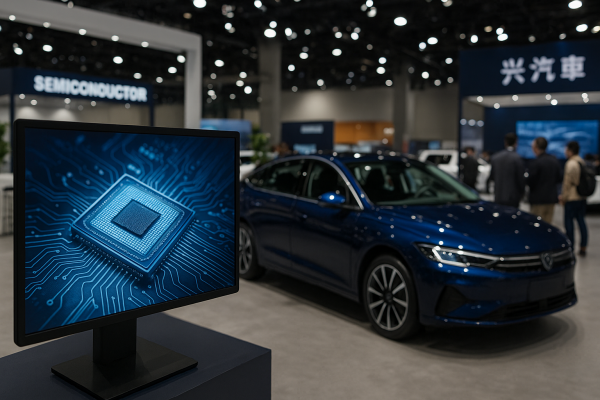While Silicon Valley is loud with the hype surrounding brain-computer interfaces (BCIs), attention often centers on one high-profile name: Elon Musk’s Neuralink. Behind the scenes, however, Europe is quietly yet determinedly building its own neurotechnological future. Startups across the continent are not merely following trends—they are shaping the market with unique solutions, often rooted in practical medicine and materials science. This raises the question: in the shadow of flashy American marketing, can Europe’s quieter innovation achieve real breakthroughs and take a leading role in this revolutionary field?
At the heart of Germany’s BCI developments are clinical utility and sophisticated, personalized therapeutic systems. Freiburg-based CorTec, for instance, marked a major milestone in July 2025 when the first BCI chip developed entirely in Germany was implanted in the brain of a stroke patient at the University of Washington’s Harborview Medical Center in Seattle. The goal of the FDA-approved feasibility study was to explore whether real-time electrical cortical stimulation could lead to lasting improvements in upper limb motor function. During the procedure, flexible, soft electrodes were placed on the surface of the motor cortex, capable of recording brain activity and delivering therapeutic stimulation based on immediate feedback.
CorTec’s Brain Interchange system enables closed-loop, adaptive operation that promotes neuroplasticity—the brain’s ability to reorganize itself. The condition of the first patient, a 52-year-old, is showing promising progress, and the next phase of the program is expected to involve eight additional participants. This represents not only a technological breakthrough but also a global clinical milestone, as it is the first German-developed closed-loop BCI system used in human trials.
Another German innovator, CereGate, takes a software-driven approach, enhancing existing spinal cord and deep brain stimulation devices with BCI technology. Their solution, called MindWriting, enables sensory information to be transmitted back to the brain, establishing two-way communication between the patient and the implant—without requiring additional invasive procedures. The aim is to enhance the effectiveness of neuromodulation therapies for conditions like Parkinson’s disease by using adaptive stimulation algorithms to target sensory symptoms more effectively.
While these European developments prioritize medical applications, Neuralink continues to focus on the human-machine interface and the control of digital devices via thought. The company—which has raised approximately $1.3 billion from investors and is currently valued at $9 billion—announced in August 2025 that it is launching a clinical trial in the United Kingdom. The study aims to determine whether its implant can enable patients with severe paralysis to operate digital and physical tools using only their thoughts. Neuralink is partnering with University College London Hospitals Trust and Newcastle Hospitals to carry out the trial.
Patients with paralysis resulting from spinal cord injuries or amyotrophic lateral sclerosis (ALS) are eligible to participate. According to Neuralink, five patients are already using the device for similar purposes. Although human trials only began in 2024—after the company resolved earlier safety concerns raised by the FDA—Neuralink has received immense public attention thanks to Musk’s celebrity status and the futuristic narratives associated with transhumanism.
Meanwhile, in Spain, innovations focusing on materials science and user accessibility are coming to the forefront. INBRAIN Neuroelectronics is playing a pioneering role in the application of graphene-based brain electrodes. Graphene’s flexibility, ultra-thin structure, and conductivity enable the development of high-precision, biocompatible brain interfaces that pose less risk of tissue damage compared to traditional metal electrodes. The company aims to improve the treatment of neurological disorders such as epilepsy and Parkinson’s disease by more precisely decoding and modulating pathological neural activity.
Spanish company Bitbrain, by contrast, specializes in non-invasive BCI applications, offering portable, high-quality EEG devices for healthcare and consumer research. Their focus lies in scientifically validated consumer neurotechnology, mental health applications, and wearable BCI systems enhanced with artificial intelligence for analyzing usable neural data. Bitbrain’s partnerships and EU funding reflect its active role in driving cross-sector innovation and expanding BCI accessibility beyond the clinical setting—to include mental health support, cognitive training, and research.
It is clear, then, that Europe’s BCI strategy stands on multiple pillars. While Germany focuses on enhancing existing therapies and advancing personalized, wireless neurostimulation—now demonstrated at the clinical level by CorTec—Spain is revolutionizing implants through novel materials like graphene and expanding the market with wearable, consumer-friendly EEG/BCI systems. Meanwhile, the United Kingdom is becoming a European testing ground for transatlantic innovation through Neuralink, intensifying the competition between European and American players.
This duality—practical clinical utility versus innovation in materials and usability—defines Europe’s position on the global BCI map. The continent’s strength doesn’t lie in a single, all-encompassing project but in a network of specialized, complementary developments. This diversified, deeply professional approach gives Europe a strong foundation not only to keep up with, but to help shape the future of neurotechnology—even in a world increasingly defined by Neuralink.
































